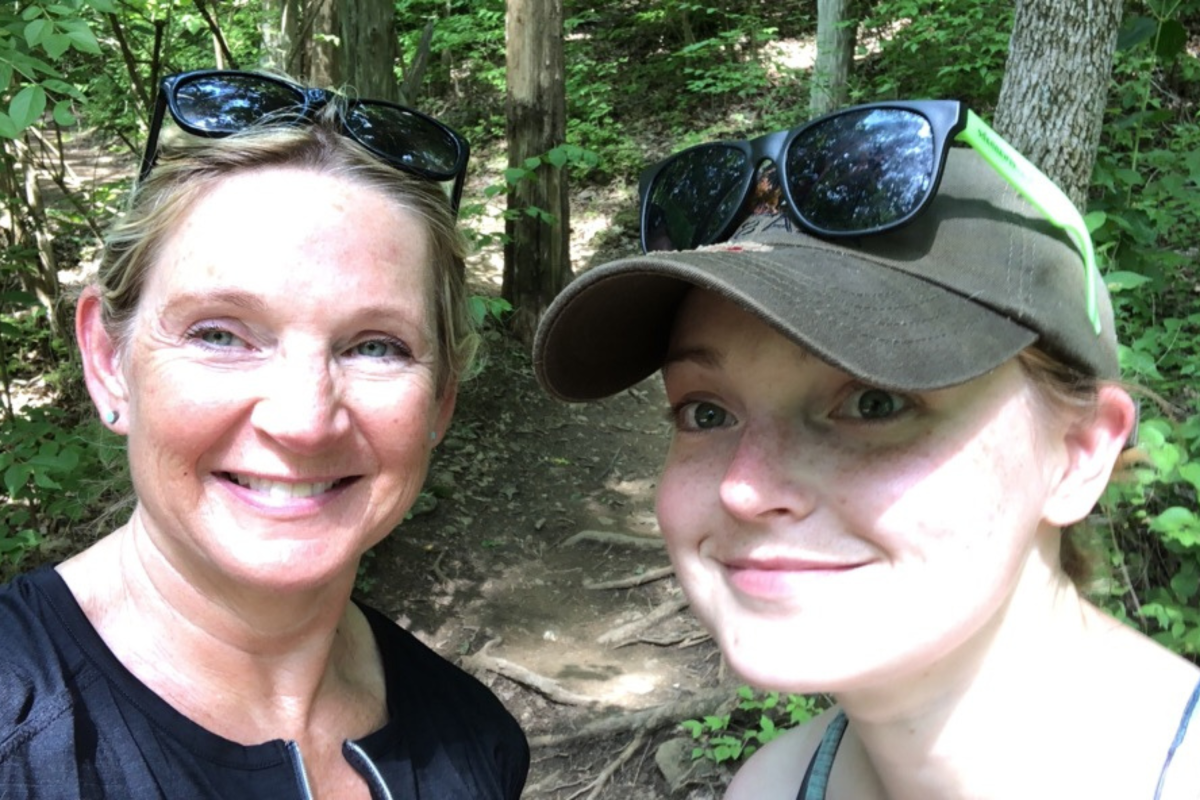The states where it’s most dangerous to be a woman

[ad_1]
Alaska and Arkansas feature prominently in a Newsweek analysis of crime statistics from across America that uncover the most dangerous states for women, based on rates of murder, sexual violence and domestic violence.
For murder, Louisiana has had one of the highest rates of men murdering women nearly every year for 25 years, the analysis shows. Washington D.C. was the highest for women who have experienced sexual violence, and Nevada was highest for domestic violence/stalking by a former partner.

Male On Female Homicide
For the first time, Newsweek has listed the top 10 states for male murder of females over a 25-year span to give a more comprehensive view of violence towards women.
Newsweek’s data is extracted from a Violence Policy Center report into 25 years of FBI homicide figures.
Louisiana was in the top 10 states for men murdering women for 24 of the 25 years between 1996 and 2020. Nevada and South Carolina are close behind, followed by Tennessee, Alaska, Oklahoma and Arkansas.
Among those looking for change is Alex Youn.
His mother, Debbie Sisco, and his sister, Marie Varsos, were shot dead by Marie’s husband, Shaun Varsos, in Tennessee in April 2021.
The killings followed months of harassment and threats by Shaun Varsos but police didn’t act. When he called round Debbie Sisco’s house armed with a gun and broke down the back door, Debbie and Marie ran out the front. He chased them to a neighbor’s house and shot Debbie in the back. Marie shot him three times before he shot her dead. Shaun Varsos, heavily bleeding, dragged himself to his car, drove home and killed himself.
Youn has since been campaigning for violence prevention measures and policy reforms that could spare other families from such grief.
As part of his efforts, Youn collaborated with policy leaders in Tennessee and crafted four bills, of which two were successfully passed into law.
“My mother and I had daily phone conversations that we both cherished, filled with laughter, shared humor, and companionship,” he told Newsweek. “Those moments and our time together are irreplaceable. Even now, I occasionally find myself speaking to her in my thoughts and imagining how she would perceive recent events.”
One of the most painful aspects of the case has been dealing with the financial affairs of all three people left dead, including Shaun Varsos’.
“One aspect often overlooked when discussing the loss of a loved one is handling their affairs after they’ve passed. In my case, I was tasked with managing three individuals’ affairs, including Shaun’s, due to shared assets such as the house and cars.”
That proved to be “an emotional, ongoing, and frustrating process,” he said.
He is now campaigning to make it compulsory for domestic abusers to wear electronic trackers so that police can ensure that they stay away from their victim if directed.
He believes that could be the single biggest factor in reducing domestic violence and female homicides across America.
“Implementing GPS monitoring for domestic violence offenders is paramount, along with a notification system for victims and law enforcement. We must prioritize monitoring the movements of individuals with a history of domestic violence,” Youn said.
“If you think about it, there’s nothing to dissuade an offender from approaching a victim, and there’s no way of knowing if an offender is nearby. I believe my mom and sister would be still here today if the courts had mandated GPS monitoring and notifications of Shaun’s proximity to my sister as a condition of bail.”
As there is a strong link between homicide and domestic violence, Youn wants far better coordination between police and the female victims of violence.
“There were systemic failures in law enforcement’s response to Shaun’s escalating behavior, leaving him unchecked and emboldened to harm my sister and our family. A month prior to my sister’s death, Shaun had [choked] Marie until she was unconscious. I believe that local law enforcement didn’t evaluate his level of risk appropriately, and I can imagine the lethality screen of an offender is a commonality among other cases,” Youn said.
“The sheriff’s department failed to arrest Shaun on two outstanding criminal warrants after serving him an order of protection in person. Then after he was arrested, he was illegally released before his mandatory 12-hour hold. All of these critical interactions weren’t shared with my sister as they should have been.”
The Violence Policy Centre announced last year that it is no longer compiling an annual report on the statistics because of a change in the way the FBI collects the data. The FBI’s new system, over the long run, hopes to gather more accurate information on murder statistics.
State Number of Times On FBI Top Ten Male Murder of Female List 1996-2020
1. Louisiana 24
2/3. Nevada/South Carolina 23
4. Tennessee 20
5. Alaska 18
6. Oklahoma 15
7. Arkansas 14
8. New Mexico 13
9/10. Arizona/Georgia 11

Alex Youn
Sexual Violence
Figures from the Center for Disease Control’s National Intimate Partner and Sexual Violence Survey, last recorded for 2016-2017, show that over 67 percent of women in Washington D.C. have experienced sexual violence at some time in their lives, the highest percentage in the U.S.
That is followed by Alaska, Wyoming, Idaho, Arkansas, Nevada and West Virginia.
Christian F. Nunes, president of the National Organization For Women, told Newsweek that there must funding at all levels to ensure there’s no loophole for perpetrators of domestic violence, sexual assault, or stalking.
“This includes combating the alarming rise of AI-generated deepfake imagery,” she said, adding: “There must be a concerted effort to help women of color, who are often neglected, including equity in investing and prosecuting rape…cases from BIPOC [Black, indigenous and people of color] and marginalized communities.”
State percentage of women who have experienced sexual violence
1. Washington D.C 67.1
2. Alaska 65.4
3. Wyoming 63.1
4. Idaho 62.0
5. Arkansas 61.9
6/7. Nevada/West Virginia 61.7
8. Washington State 61.2
9. Massachusetts 60.9
10. Colorado 60.7

Alex Wong/Getty Images
Domestic Violence, Sexual Violence and Stalking By Former Partner
The Center for Disease Control’s National Intimate Partner and Sexual Violence Survey, last recorded for 2016-2017, also shows the lifetime figures for domestic violence, sexual violence and stalking by a woman’s partner or former partner.
Nevada topped the list, and is the only state where more than 60 percent of women have experienced partner domestic violence, sexual violence or stalking.
Arkansas is next, followed by Idaho, Delaware, Mississippi, North Carolina, Florida and Alaska.
Alex R. Piquero, a professor at the Department of Sociology & Criminology at the University of Miami, said that education and conflict resolution are needed to reduce domestic violence figures.
“We need to teach people that violence against women, or anyone really, is simply unacceptable. Second, we need to work with people on conflict resolution strategies. This is especially the case when we punish those who commit forms of domestic violence.”
He also said that there needs to be more encouragement for victims to come forward.
He noted figures from the Justice Department’s Bureau of Justice Statistics which show that many victims do not report for fear of retaliation.
“We need to empower victims and survivors to report to law enforcement and seek resources to help them recover, in whatever ways necessary,” Piquero said.
State % of women who have ever experienced domestic violence, sexual violence or stalking by partner or ex-partner.
1. Nevada 61.8
2. Arkansas 58.5
3. Idaho 58.2
4. Delaware 57.5
5. Mississippi 56.1
6. North Carolina 54.9
7. Florida 53.9
8. Alaska 53.8
9. Arizona 53.7
10. Georgia 53.2
Uncommon Knowledge
Newsweek is committed to challenging conventional wisdom and finding connections in the search for common ground.
Newsweek is committed to challenging conventional wisdom and finding connections in the search for common ground.
[ad_2]